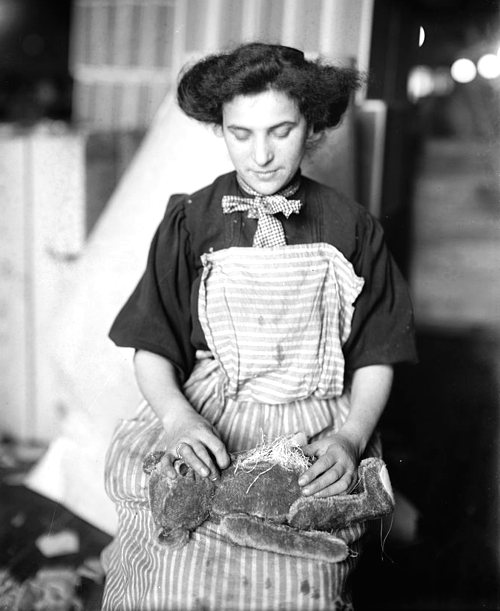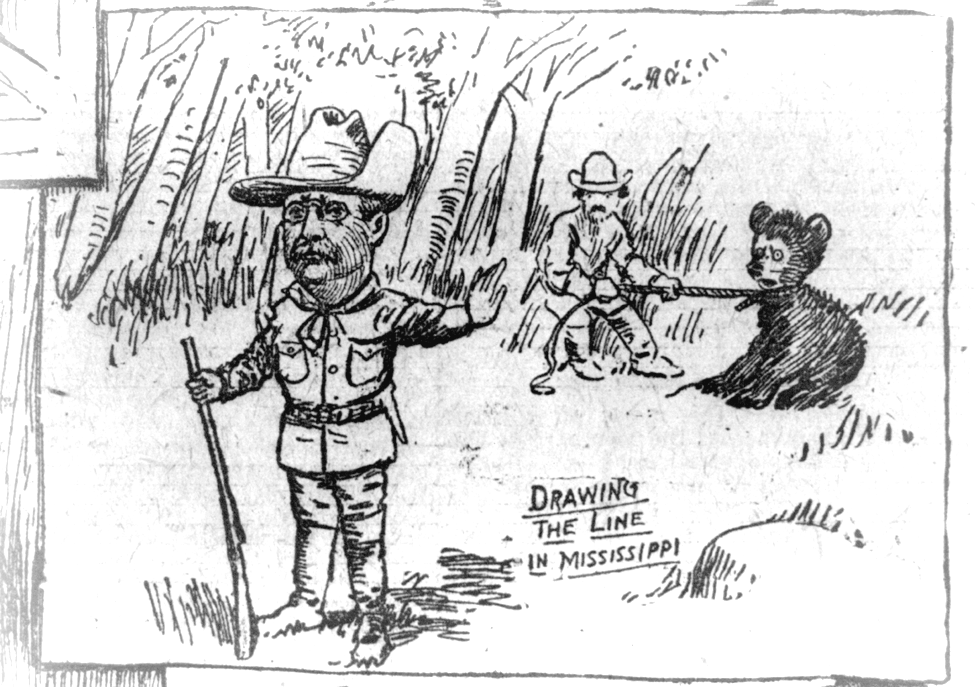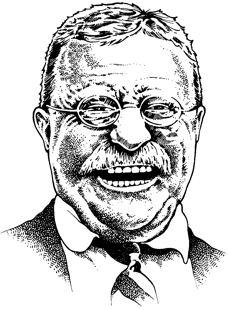The
Teddy Bear
An interesting fact about Theodore Roosevelt is that he was the inspiration for the "Teddy Bear," the popular toy for children. On a hunting trip to Mississippi in 1902, Roosevelt refused to shoot an old bear that other hunters on the trip had chased, captured, and tied to a tree. He said it would not be sportsmanlike at all to shoot a tied up bear. A cartoonist at the Washington Post newspaper who heard the story made the drawing below and it was published in the paper. A store owner in Brooklyn, New York, who saw the cartoon asked "Teddy" Roosevelt if he could use the Teddy name for the stuffed toy bears he wanted to create and sell. Roosevelt gave his permission. The photo on the right shows a factory worker in the early 1900s putting stuffing in the cloth body of a Teddy Bear. |
 |

Photos below: Factory workers in New York City making Teddy Bears in 1915.
The story of the Teddy Bear is just part of Roosevelt's legacy that is still felt today.
It includes the "All-American" idea of a life lived vigorously and courageously, but always
according to the rules of fair play and good sportsmanship. He left many famous
lines in his books and speeches that are often quoted, including this one:
 Far better it is
to dare mighty things, to win glorious triumphs, even
though checkered by failure, than to take rank with those poor spirits
who neither enjoy much nor suffer much, because they live in the gray
twilight that knows not victory nor defeat. Far better it is
to dare mighty things, to win glorious triumphs, even
though checkered by failure, than to take rank with those poor spirits
who neither enjoy much nor suffer much, because they live in the gray
twilight that knows not victory nor defeat.-- Theodore Roosevelt, 1899 |
Photos and images are from the Library of Congress.
Some have been edited or resized for this page.
|
Copyright Notice
Copyright 2009, 2017 by David Burns. All rights reserved. As a guide to the Virginia Standards of Learning, some pages necessarily include phrases or sentences from that document, which is available online from the Virginia Department of Education. The author's copyright extends to the original text and graphics, unique design and layout, and related material. |